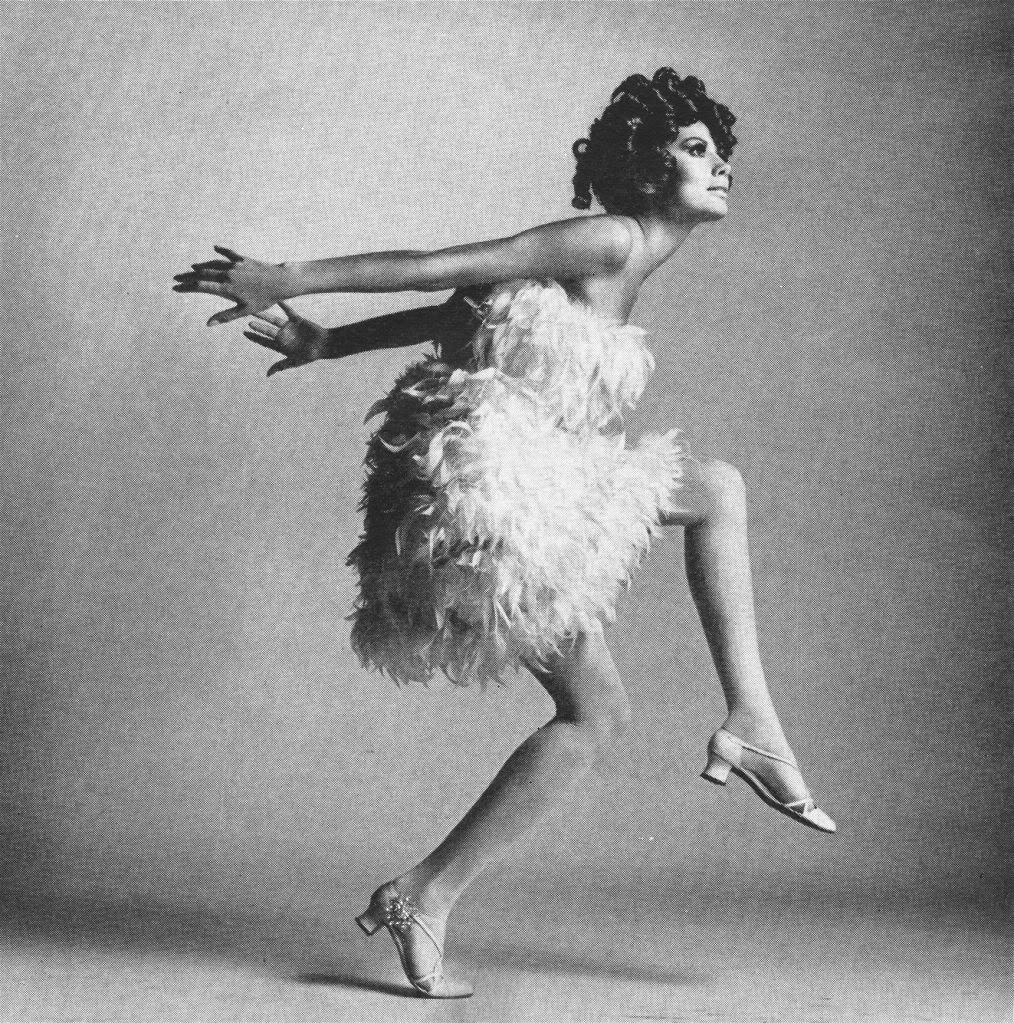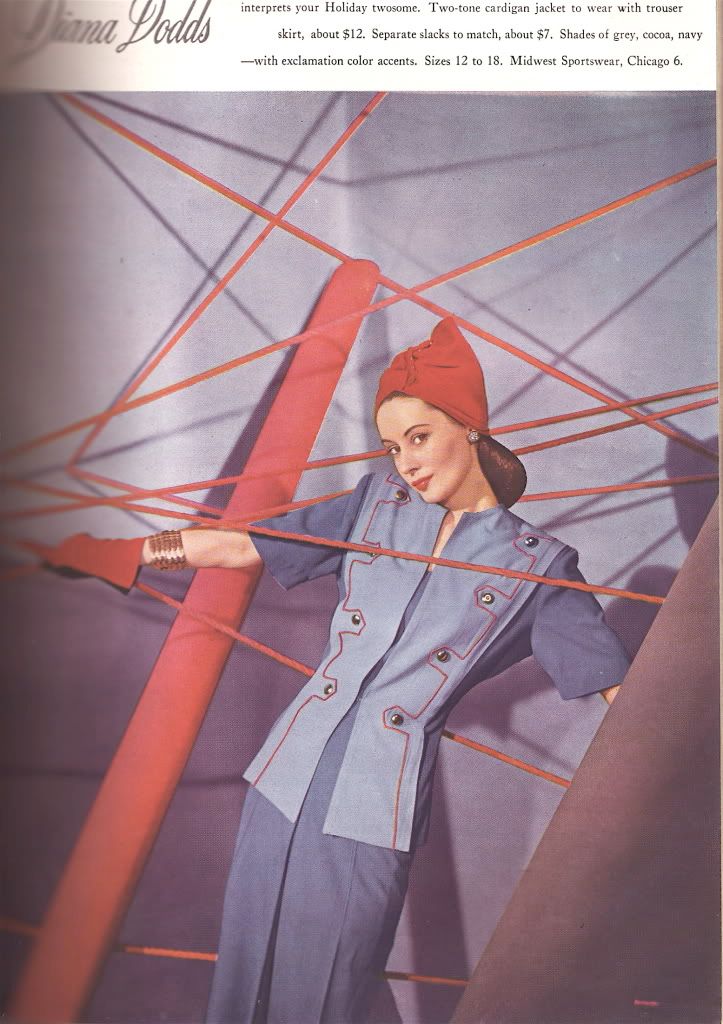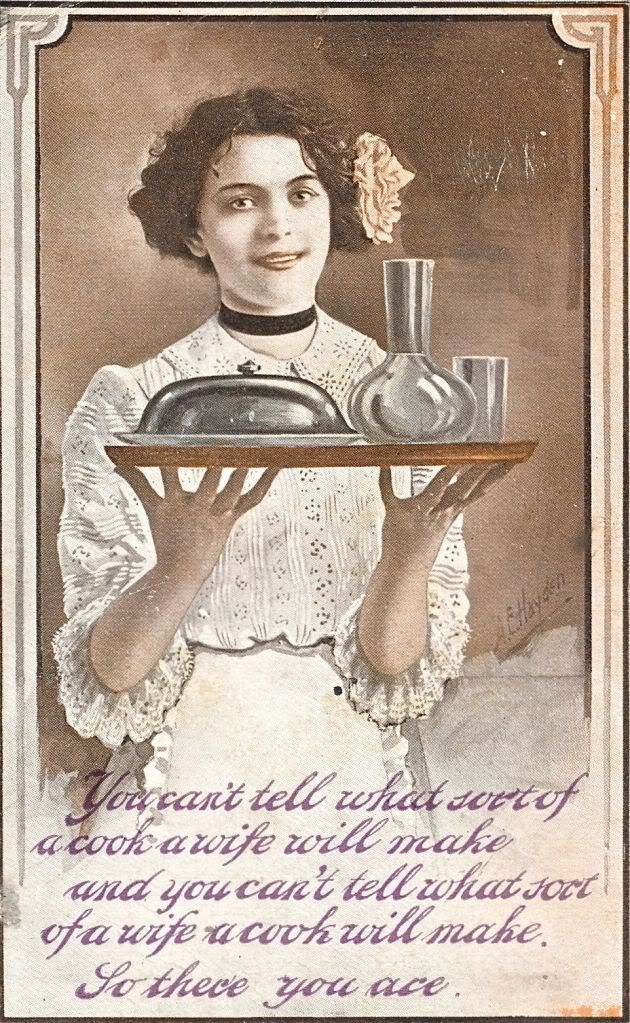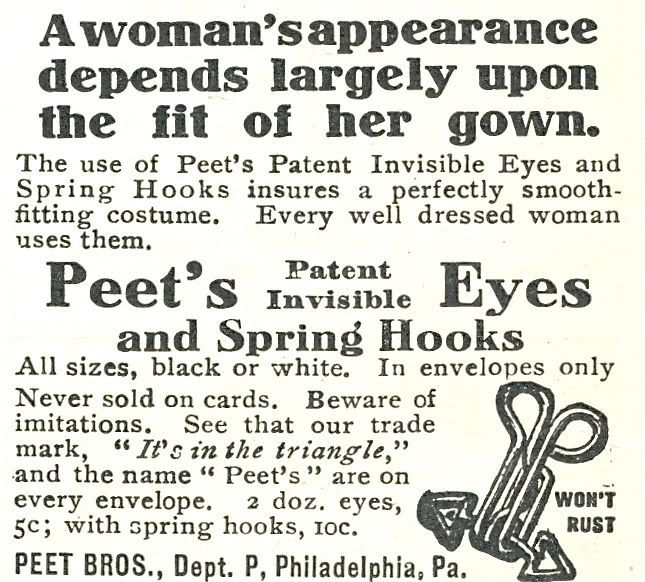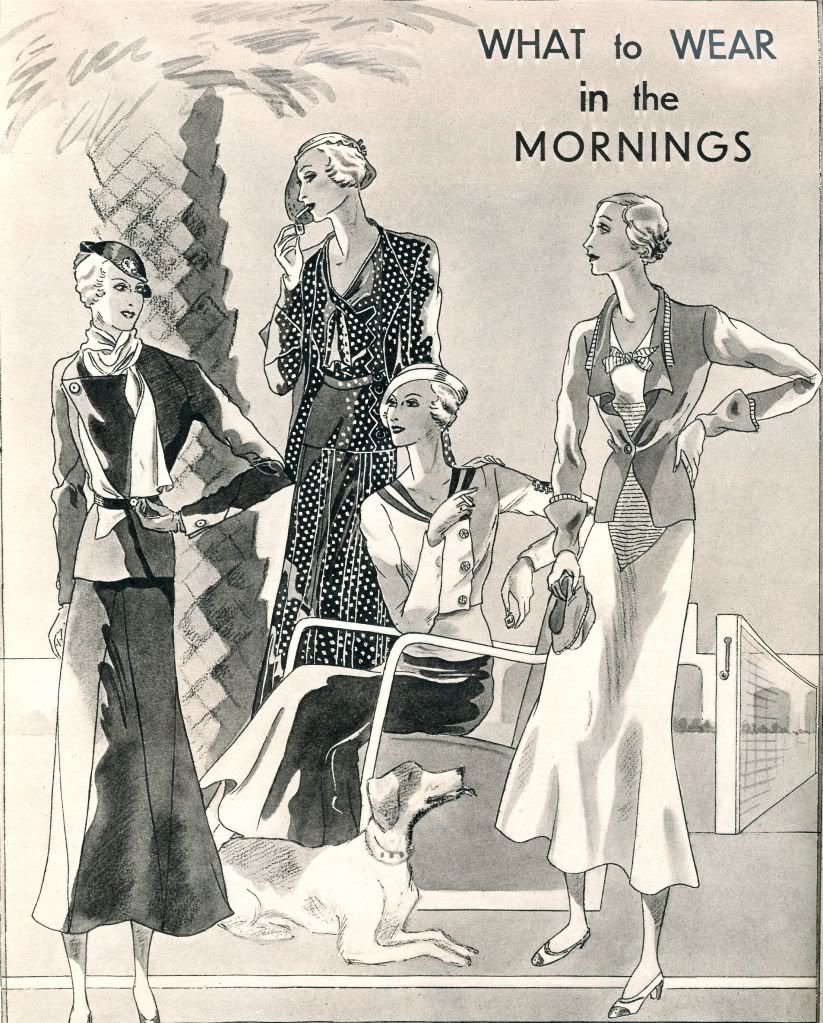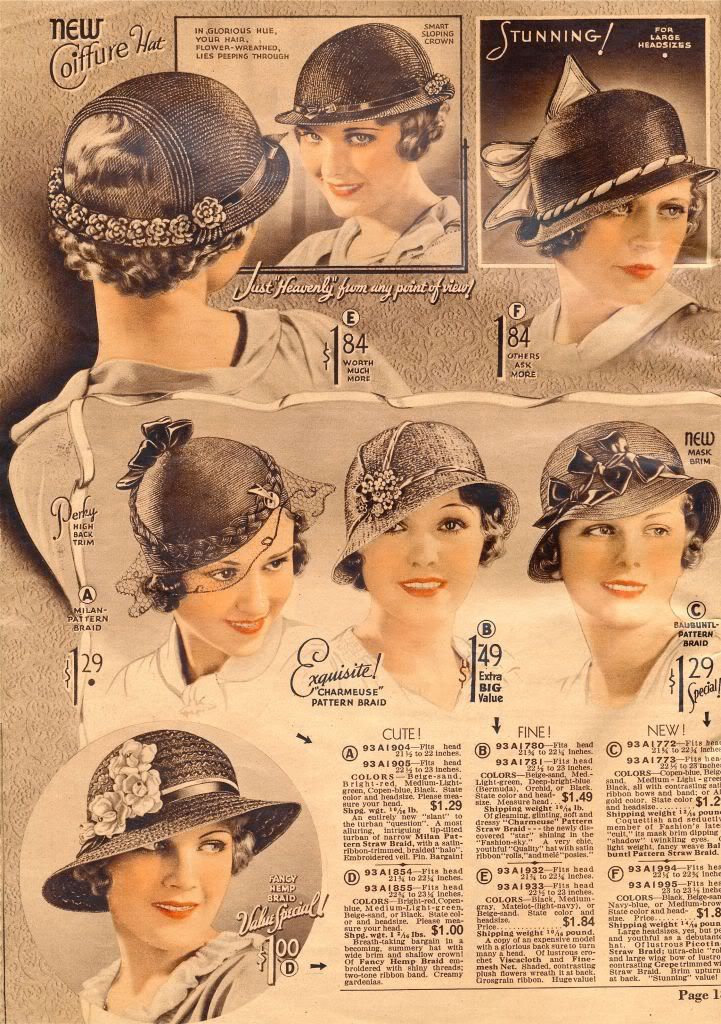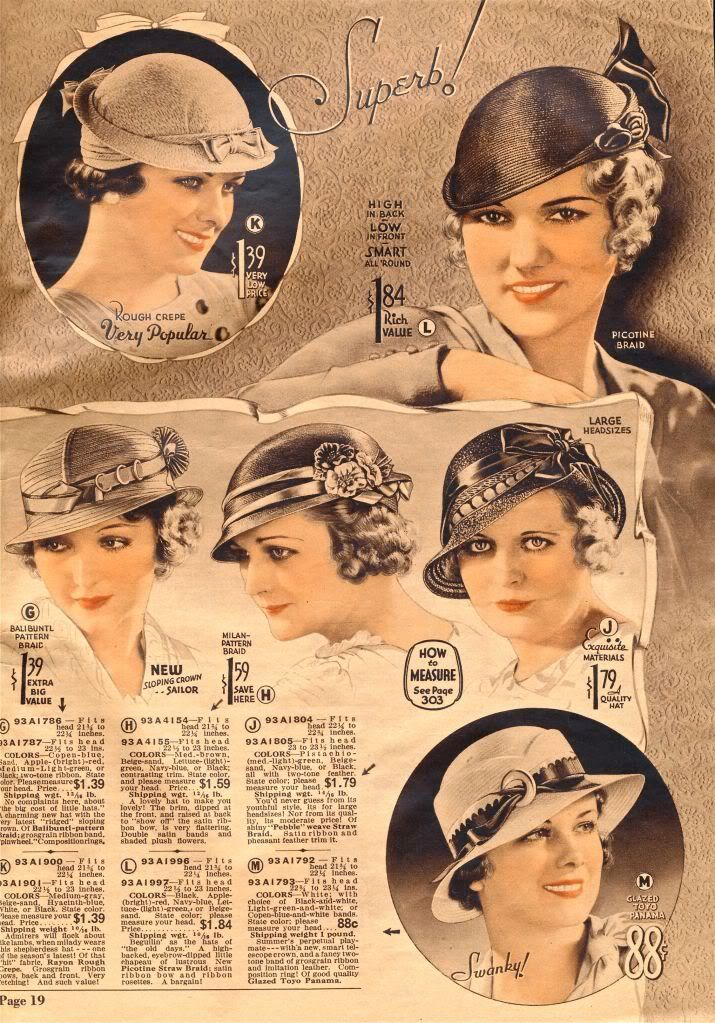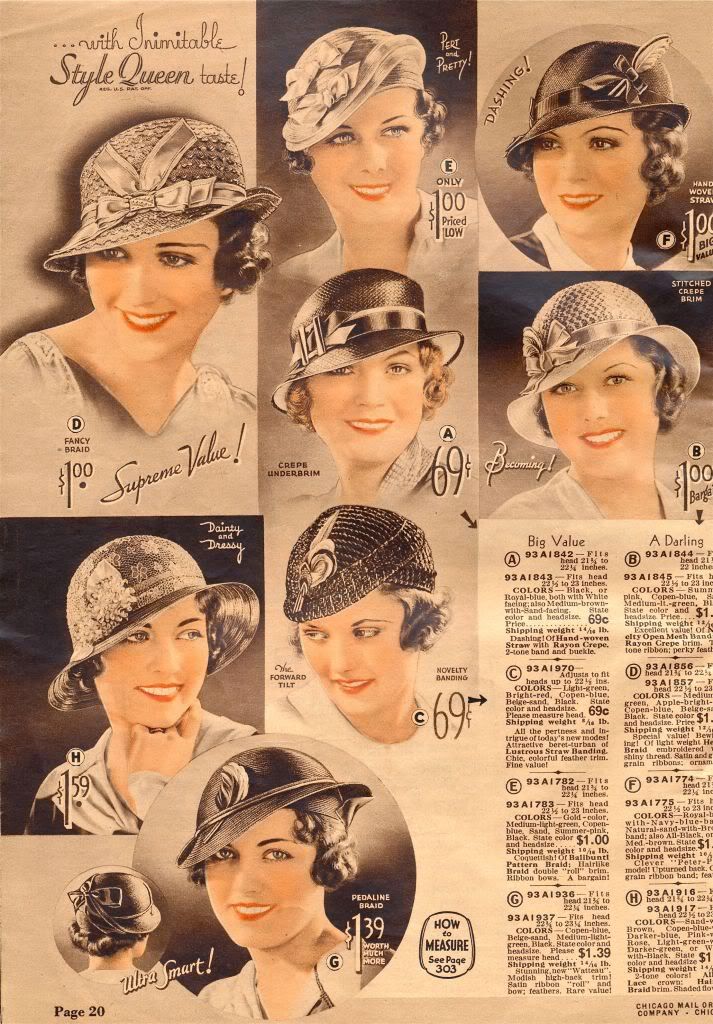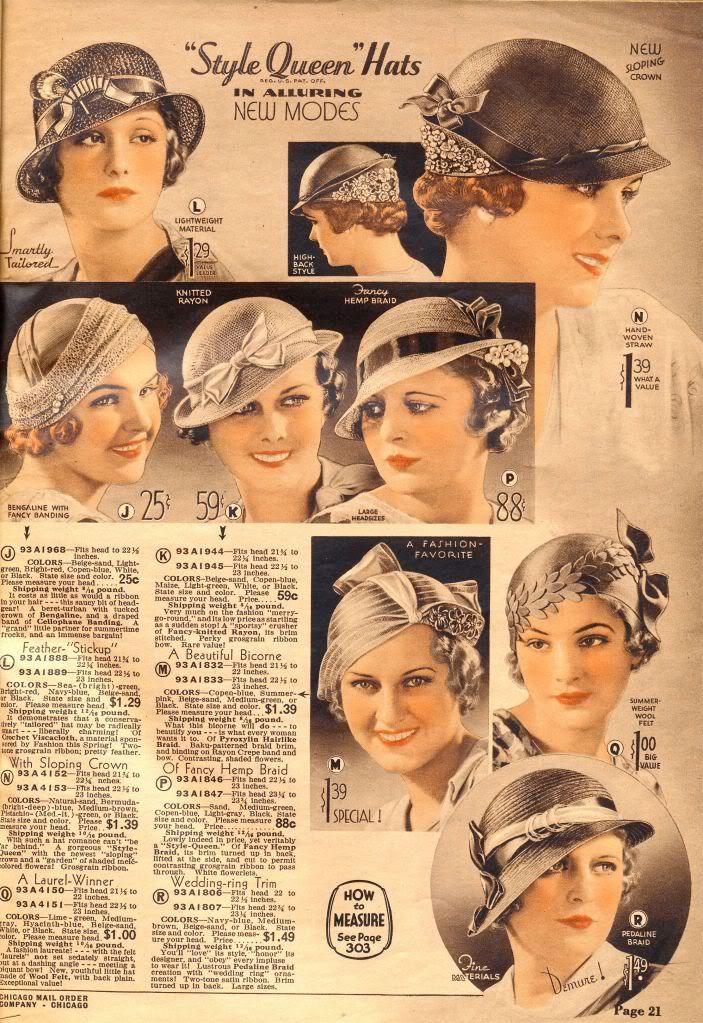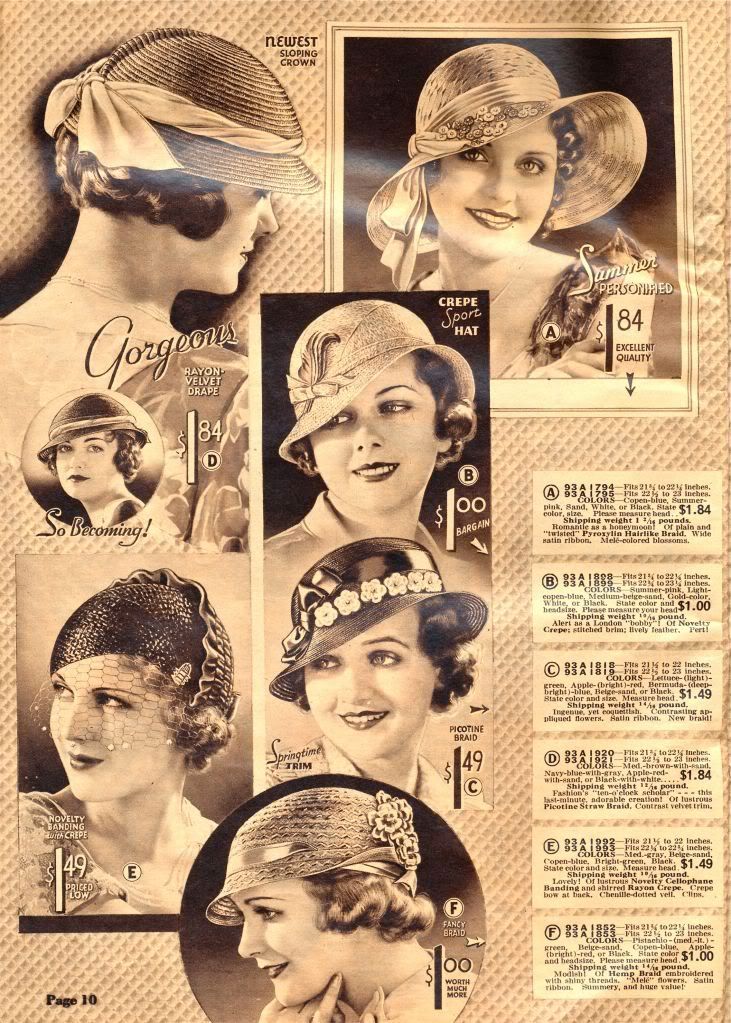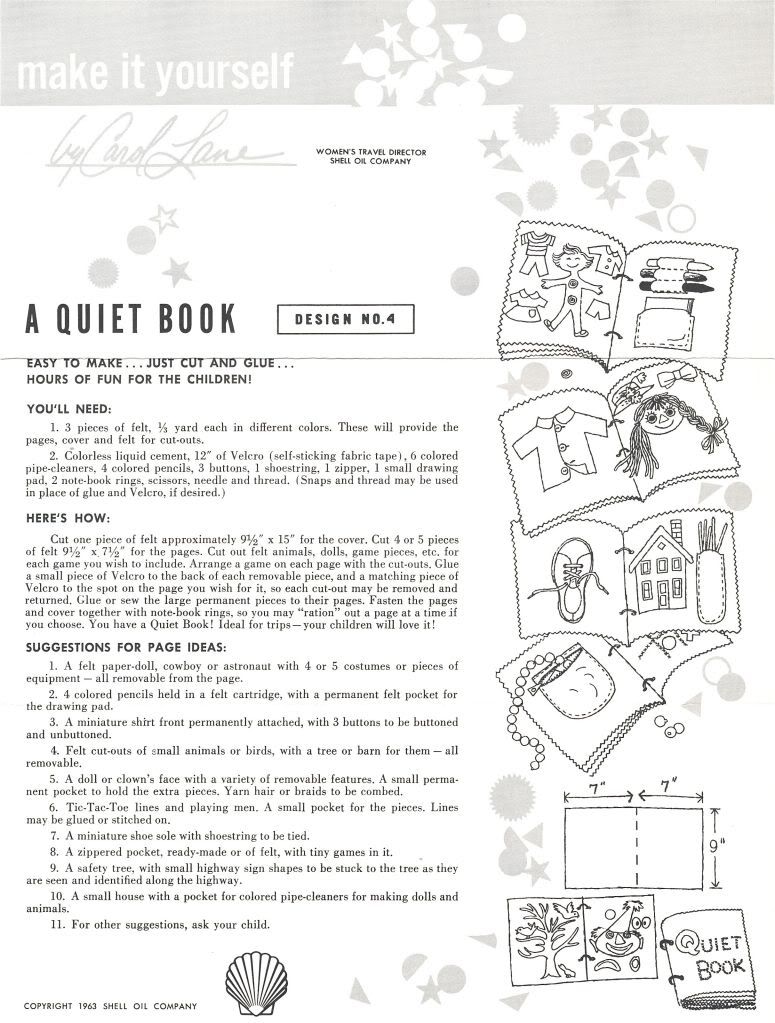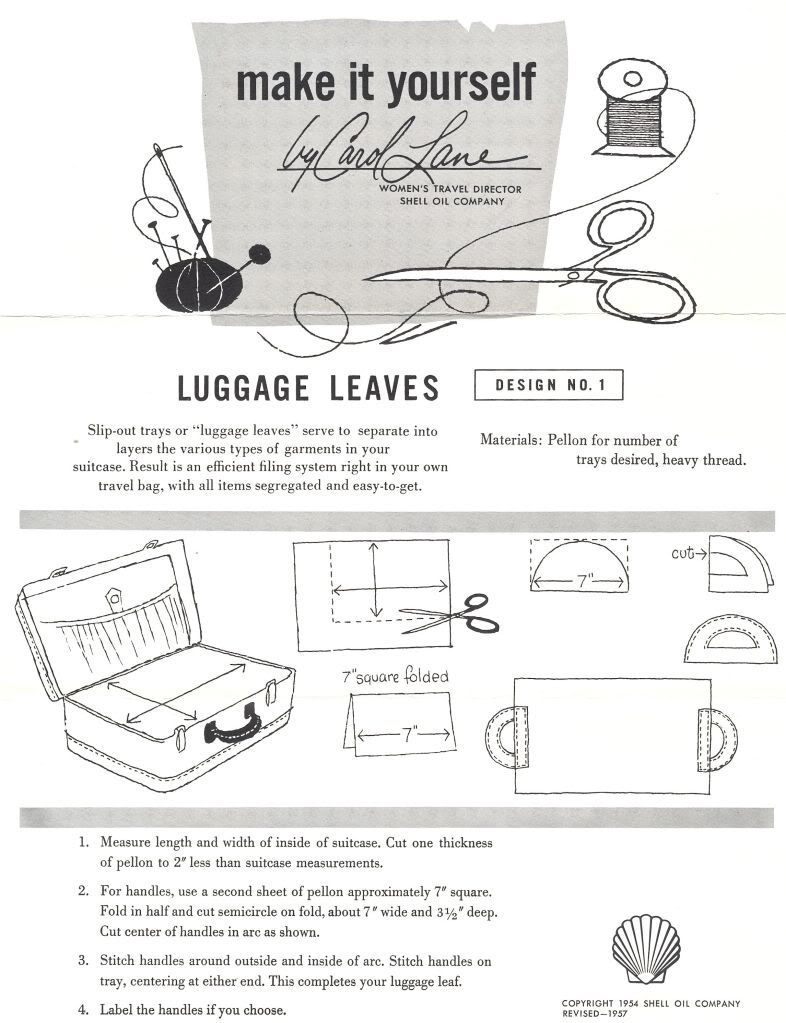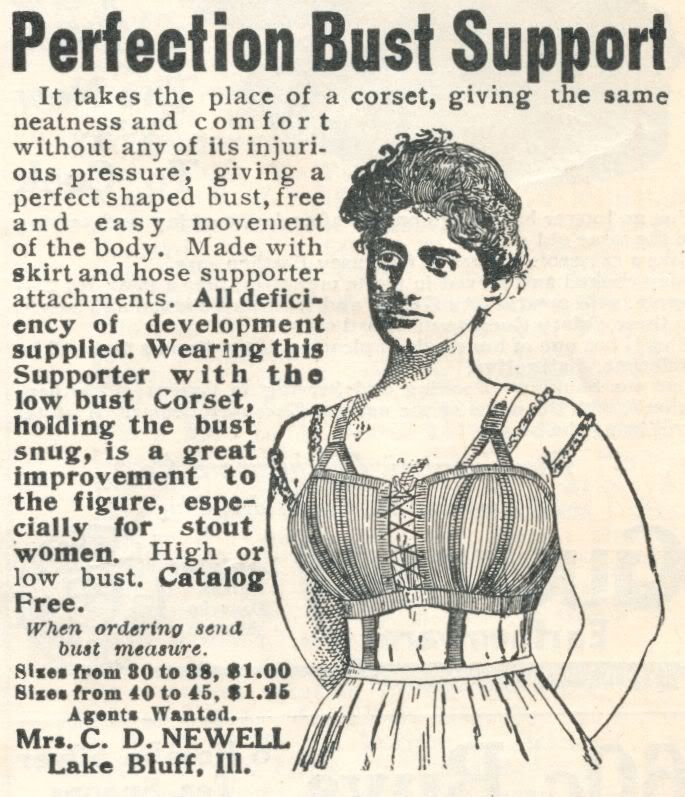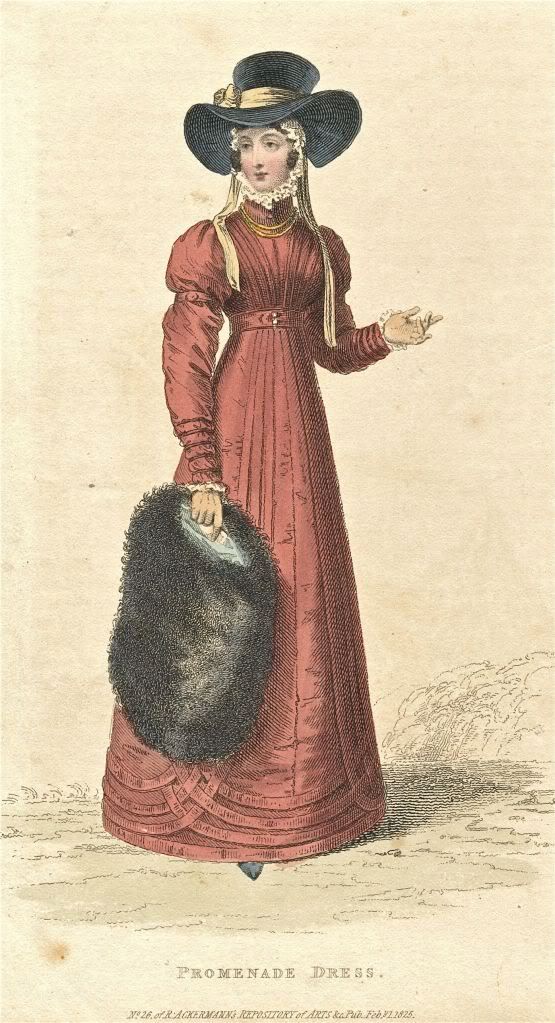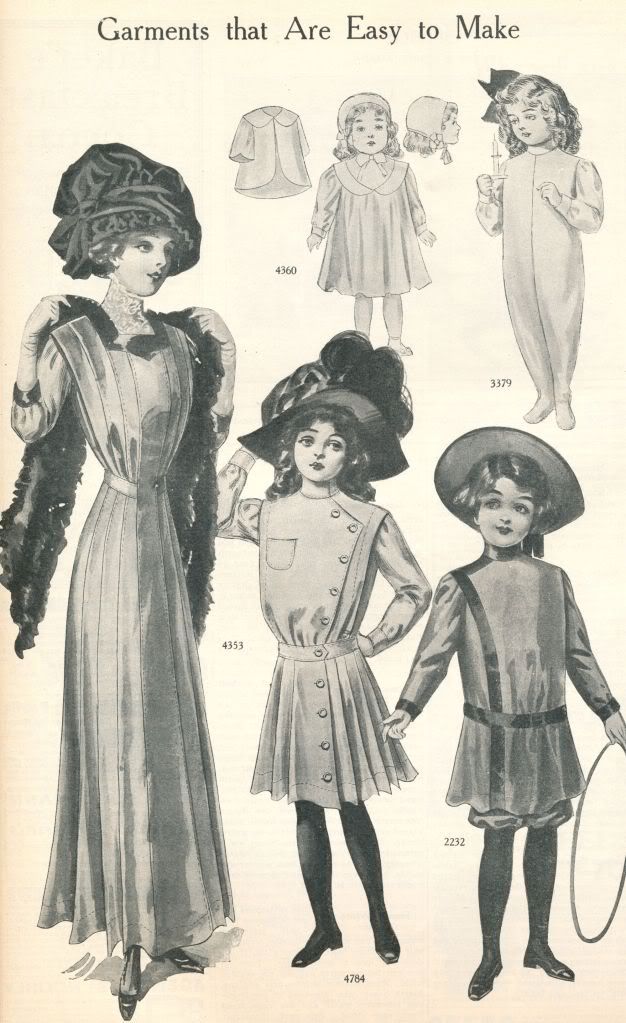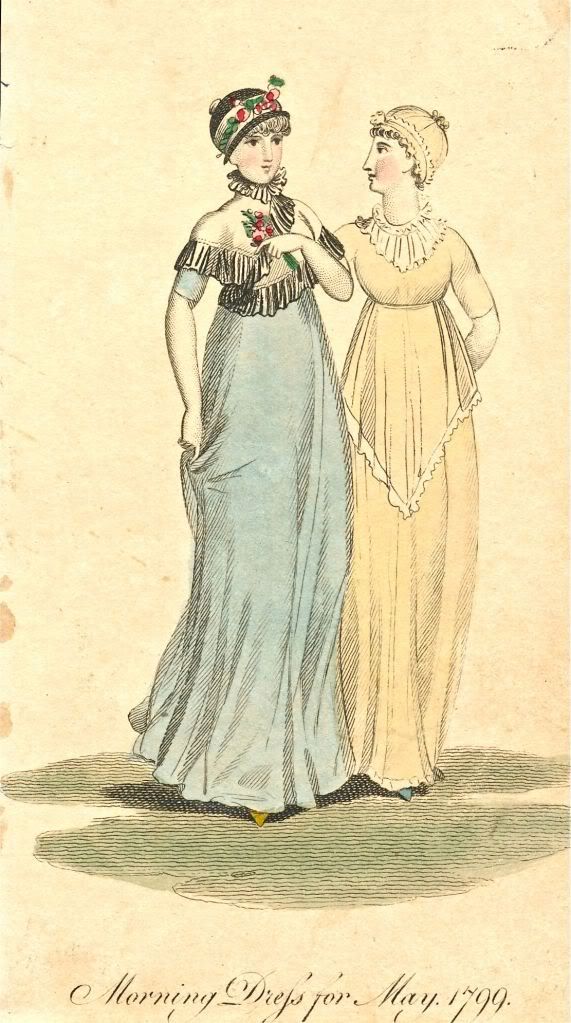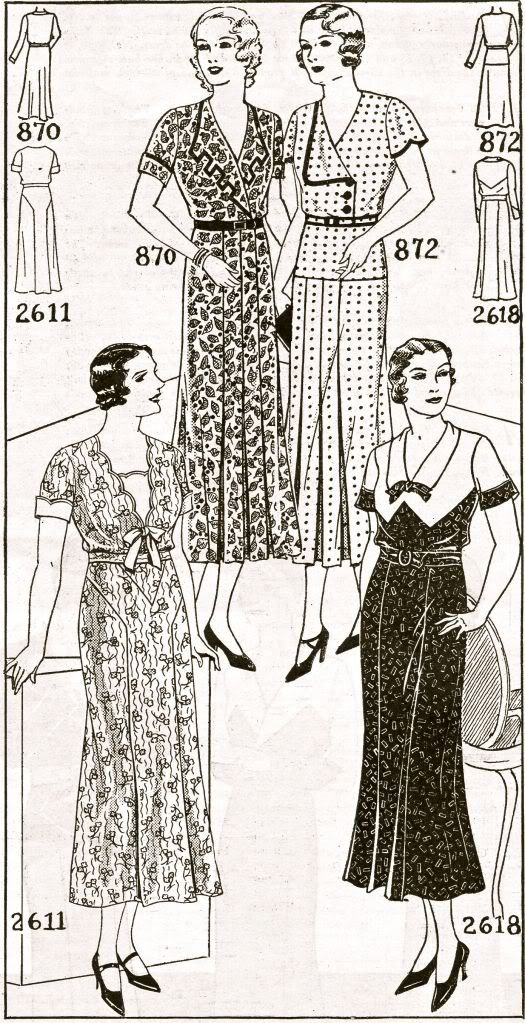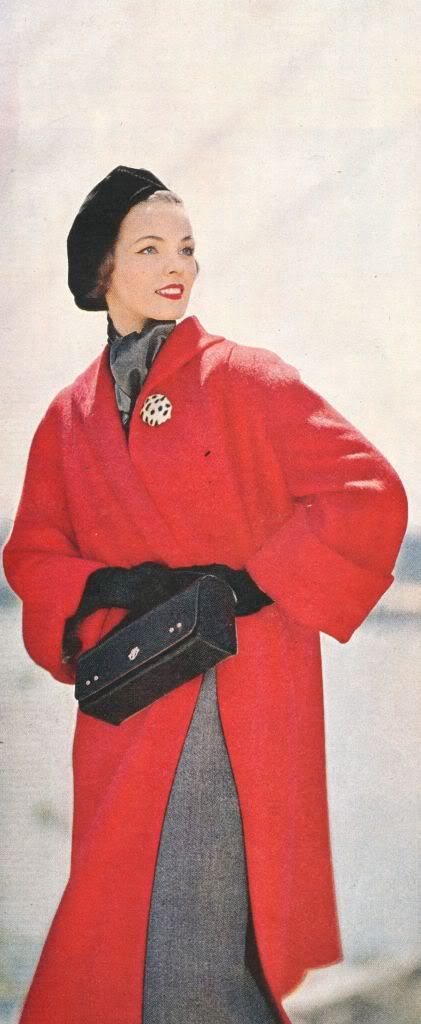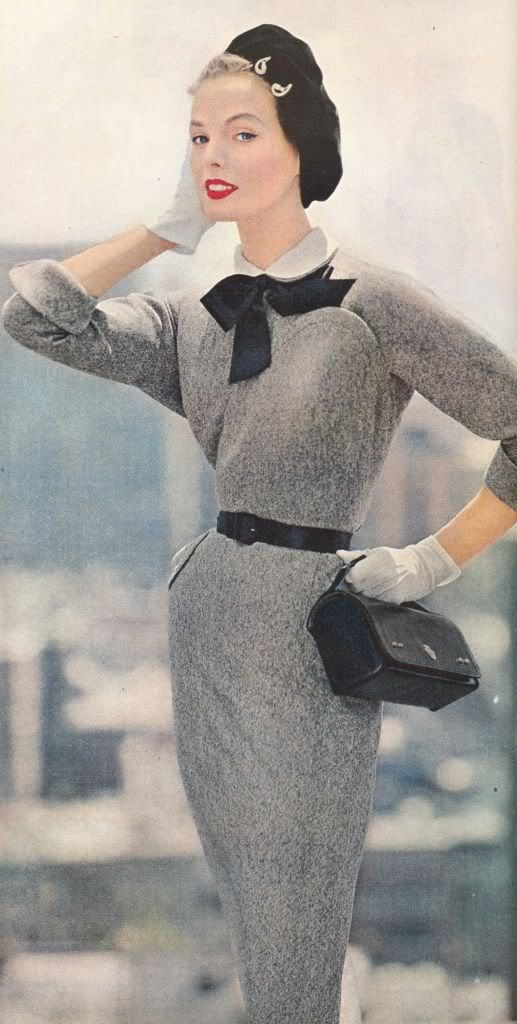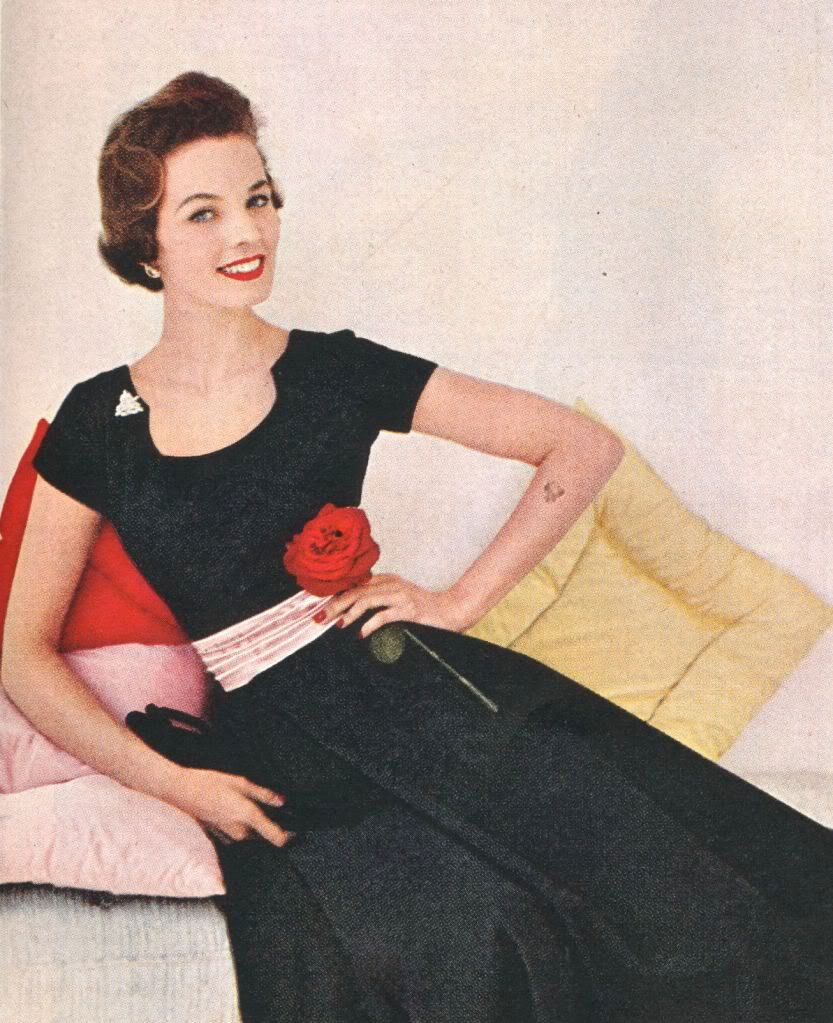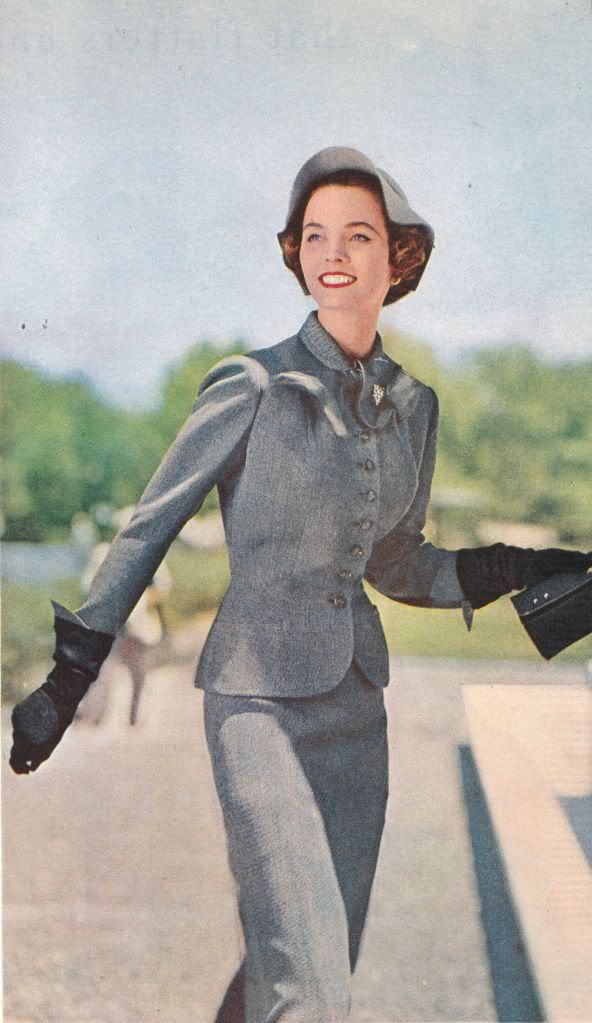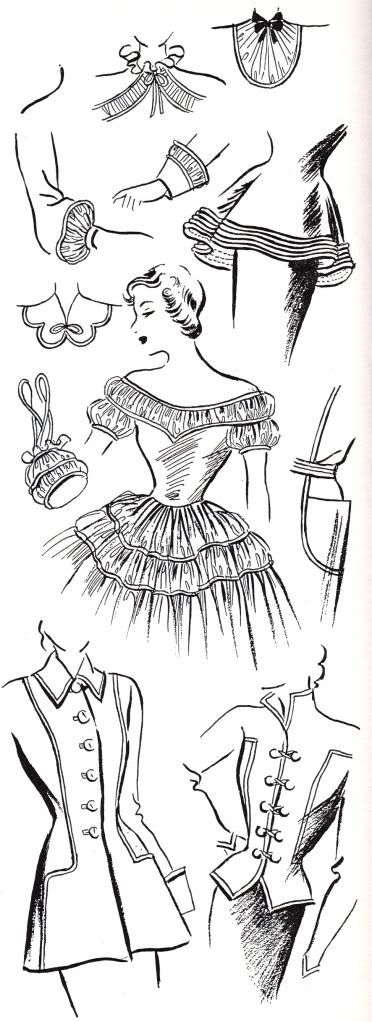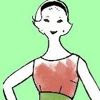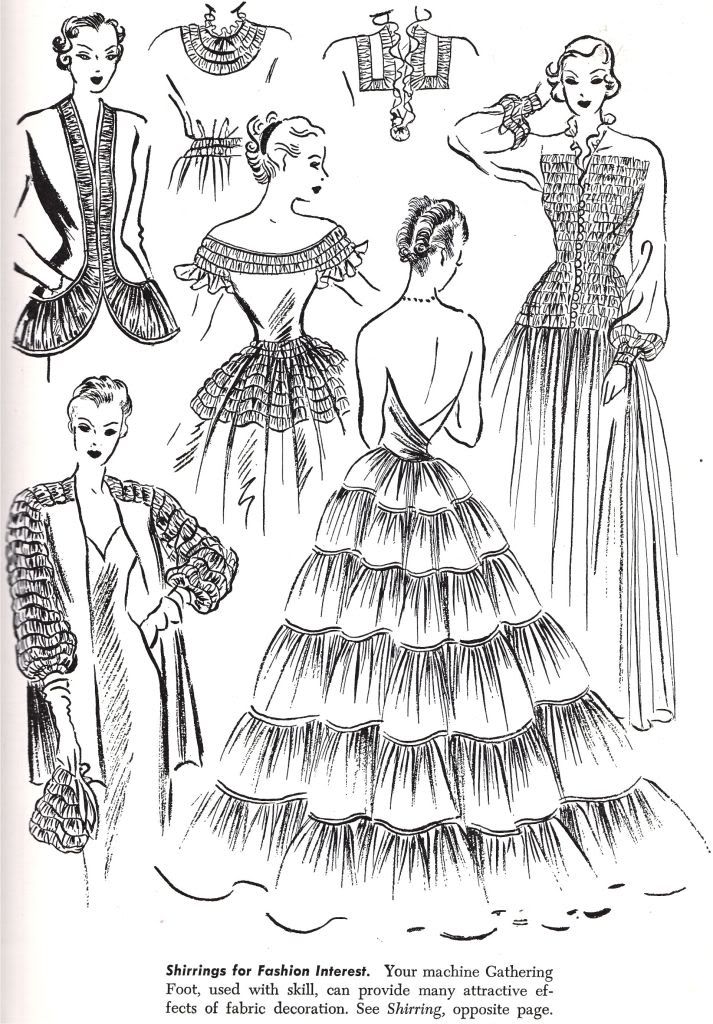
Fullness with Shirring.
Shirring consists of two or more rows of gathers and gives soft, rich effects. When fashion approves shirrings, your machine Gathering Foot comes into its own. Use matching thread, space rows evenly and distribute fullness equally along stitching line. The illustration here shows several ways in which fashion makes use of shirrings. Inserted shirred bands are shown in the blouse front opposite. A corded shaped band of shirring makes an interesting border treatment for the jacket at the top left. All-over shirred effects, as in the bodice and in the full coat sleeves shown, are obtained by evenly spaced rows of gathers put in before the garment sections are assembled. The generous skirt of the evening dress is not actually shirred, but is made of row after row of deep ruffling, joined with cording. Remember that shirring is always best in soft, limp fabrics, and that the allowance for making must be ample, since the gathers require l 1/2 to 2 times the finished measurement. Do not plan group shirrings for garments that must be washed often, since ironing is difficult.
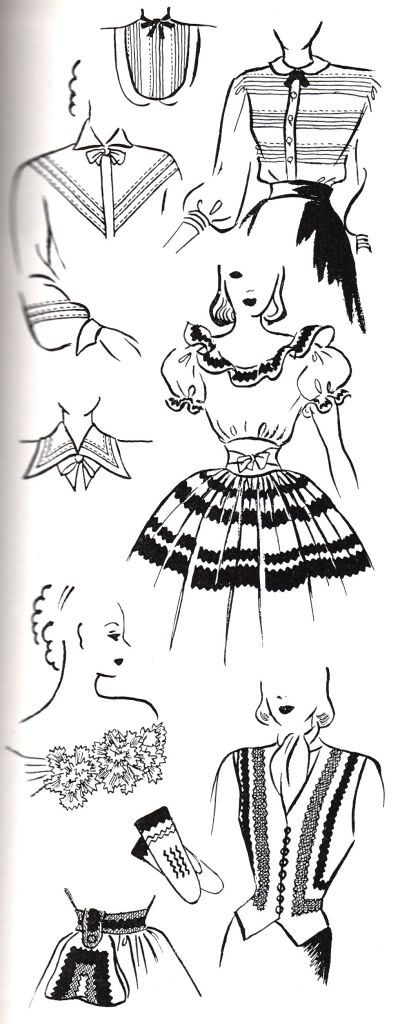
Tucking and Pinking. Every one of the Singer fashion aids offers its own distinctive method of enhancing garments and accessories. On this page are shown ways for using the Tucker and the Pinker. The trim tailored lines of tucks in the blouse fronts at the top can be made in lengthwise, crosswise, or diagonal patterns, as shown, and evenly spaced, graduated or in groups. Tucking is one form of fabric decoration that is nearly always in fashion. It is attractive not only in sheer cottons and lingerie fabrics, but also in dress woolens. For tucking in children's and infants' garments. The Pinker makes the easy and attractive notched edges shown in the rosettes at the neckline and in the trimming of vest, gloves, belt and bag at the bottom. Felt is excellent for pinked bandings, since it does not ravel. Taffeta, chintz, organdie, and plastic fabrics are also practical for pinking. The dress in the center also shows the versatility of the Pinker. The applied pinked bands in neck ruffle and skirt are of two different widths and so spaced as to make an interesting crosswise accent.
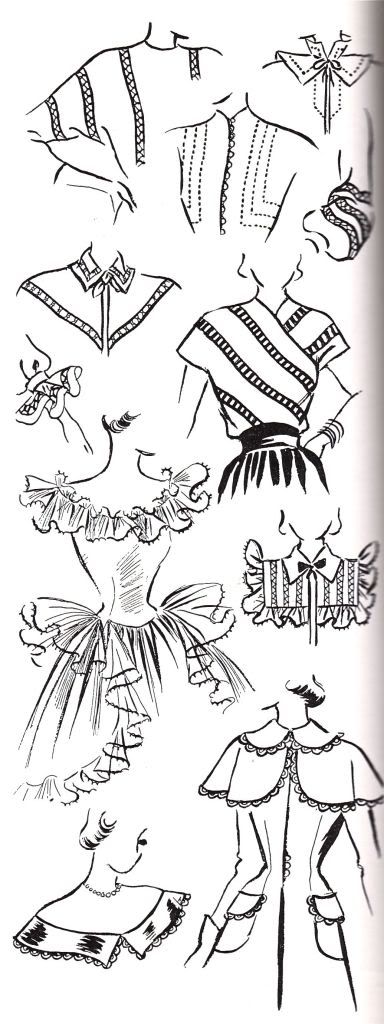
Fagoting and Hemstitching fabric decoration with open-work designs and with self-trimming can provide attractive fashion details. Open work is particularly appropriate for summer clothing and lightweight fabrics, while the tubing is suitable for somewhat heavier fabrics. Both the Singer Fagoter and the Hemstitcher can be used for open-work lines. The choice depends on the effect desired. The Hemstitcher gives a narrow line of open work and does this in stitching directly on the fabric. The collar and bodice front at the top right show bow hemstitched designs appear. The Fagoter makes an open-work insertion which is applied in seams or in slashes placed to contribute to the dress design. The lines in the deep armhole and shoulder at top left, the deep ruffled cuff at the left and the ruffled yoke at center are done with the Fagoter in cross-stitch effect. Use yarn, braid, tubing, crochet cotton or embroidery floss to make your fagoting, depending on the fabric used in the garment. The Hemstitcher has another very practical and effective use. It provides the dainty edge finish of the picoted ruffles in the sheer dress at center right and the yoke beside it. This is produced when hemstitched lines are cut in half. Tubing Self-trimming with tubing can be used in a variety of ways. It, too, can provide open-seam insets, as in the diagonal lines of the blouse and the neckline shown here. The tubing, made with the Cording Foot is cut and stitched in parallel lines to give the ladder pattern of the blouse and inserted. A contrasting color used here accents this line. This arrangement may be varied by knotting each cross bar. As an edge finish, tubing is also attractive when arranged with the looped or scalloped line shown on the off-the-shoulder neckline and the cape coat below.
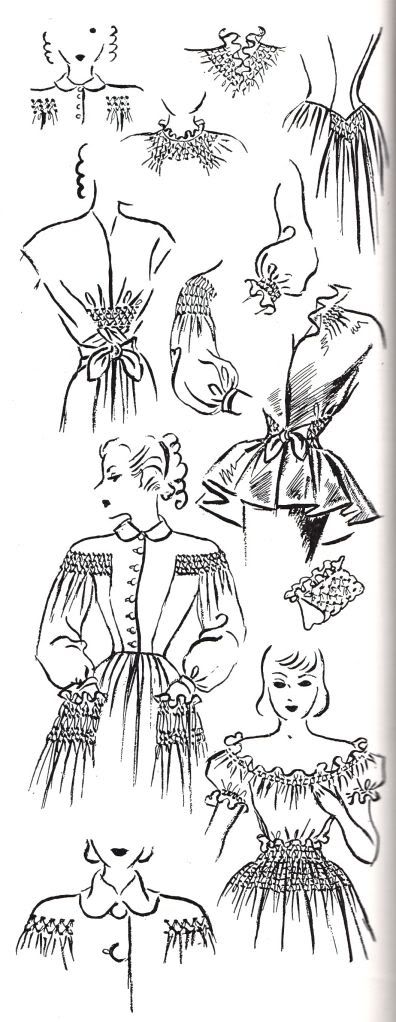
Fullness with Smocking. Always a favored fabric decoration for children's clothes and young effects, machine smocking is also attractive on grown-up garments and accessories where it is desirable to hold and control fullness at shoulder, neckline, waistline, etc. 'Peasant" styles can be created by using bright colored thread for the stitching. More formal effects, as at the upper right of the illustration, require stitching with matching thread. Smocking, either by hand or with your machine Gathering Foot, should be done only in fabrics that are soft enough to look well with considerable fullness. Many like to gather by machine, then decorate with a twisted chain or briar-stitch by hand over the machine gathering lines. This is especially attractive in plisse' cotton crepe, for children's dresses, blouses and skirts.
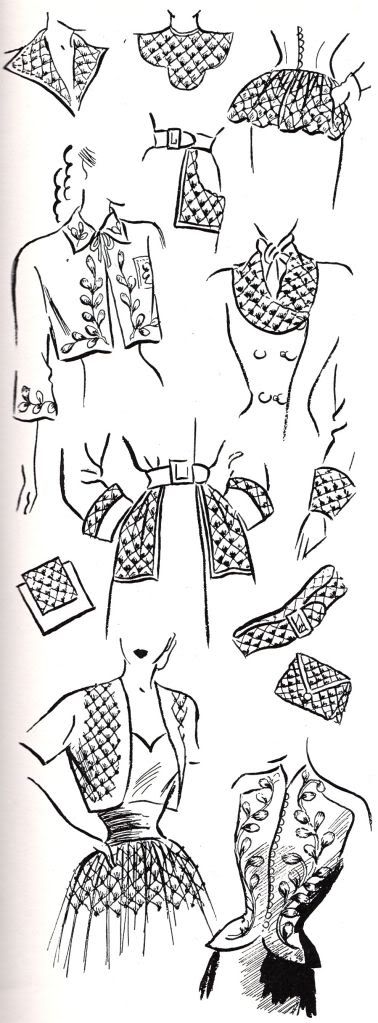
Quilting- Top-Stitching Quilting. Originally used to provide warmth, quilting is now more often used for enrichment or beautification of fabric and for purpose of design. When fashion favors quilting for wearing apparel and when you are master of your machine, the Quilter, with its adjustable Quilter Bar, can help you to make really lovely garments and accessories (see page 118). A few designs are shown here to inspire you to use this very practical means of fabric decoration. Simple block quilting, as shown on pockets, collars, cuffs, and belt here, can be very effective. For evening wear, it may be given added interest by adding sequins at the crossing of stitching lines, as in the bolero jacket and gathered skirt. Italian quilting in floral designs, as in the two other jackets shown here, especially dainty and feminine.
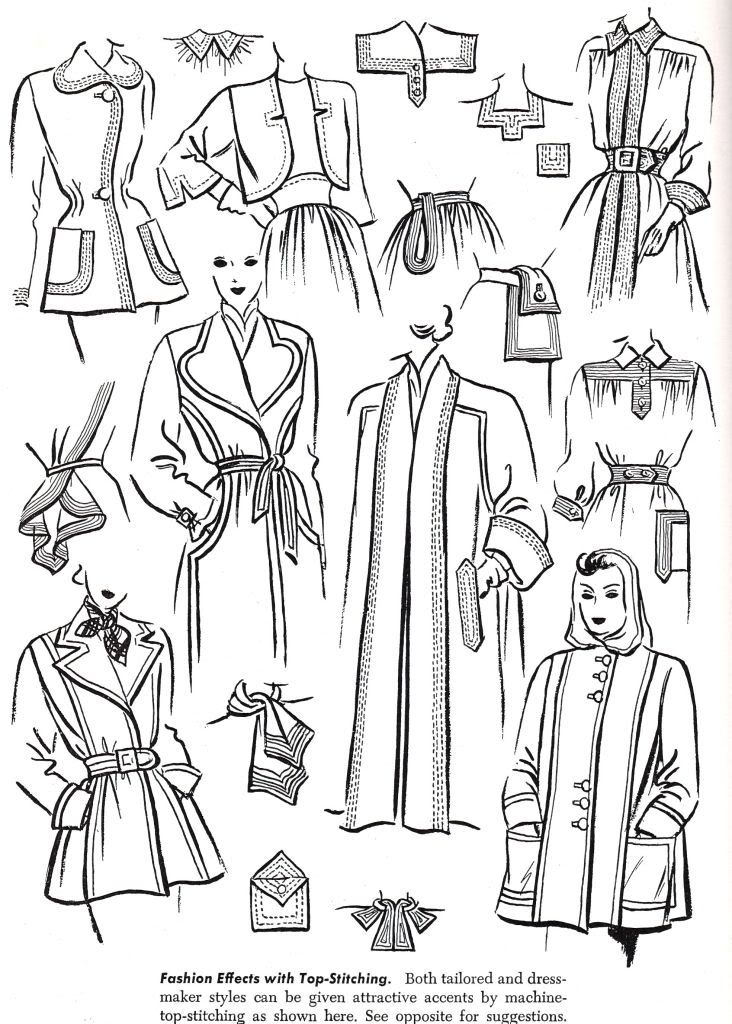
Top-Stitching. This is a smart and practical way to accent the lines of a garment and to give additional firmness along edge. Stitching may be done in matching or contrasting thread, according to the effect desired. A single line of stitching on heavy fabric, as in the coats at the bottom of the opposite illustration, gives a welted effect. In lighter weight fabrics, several parallel rows can be used, either in all-over effect, as in cuffs, yokes, pockets, belts and panels, or to lend importance to a line or edge.




